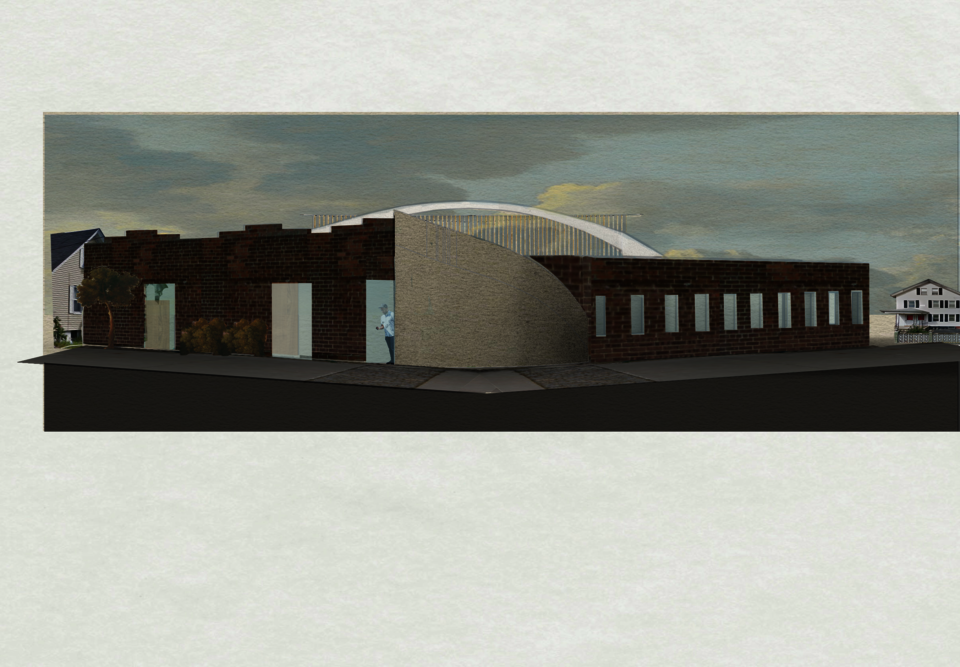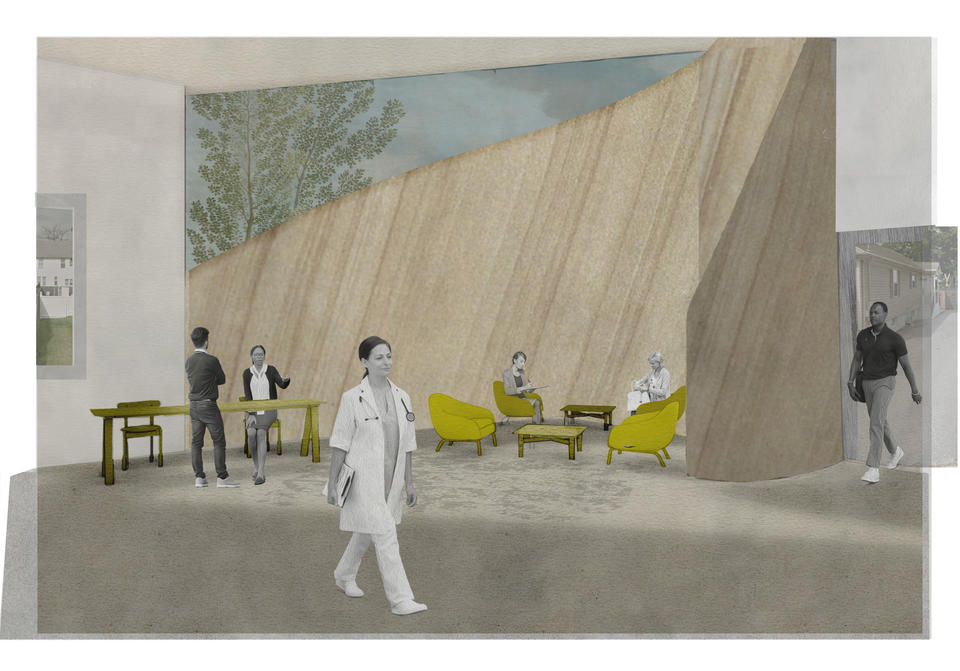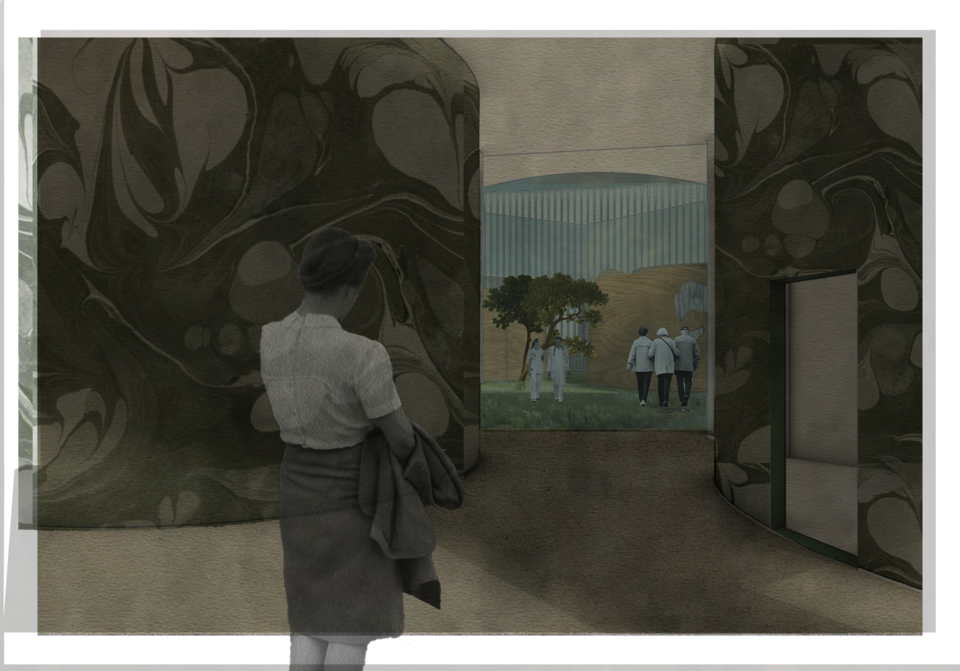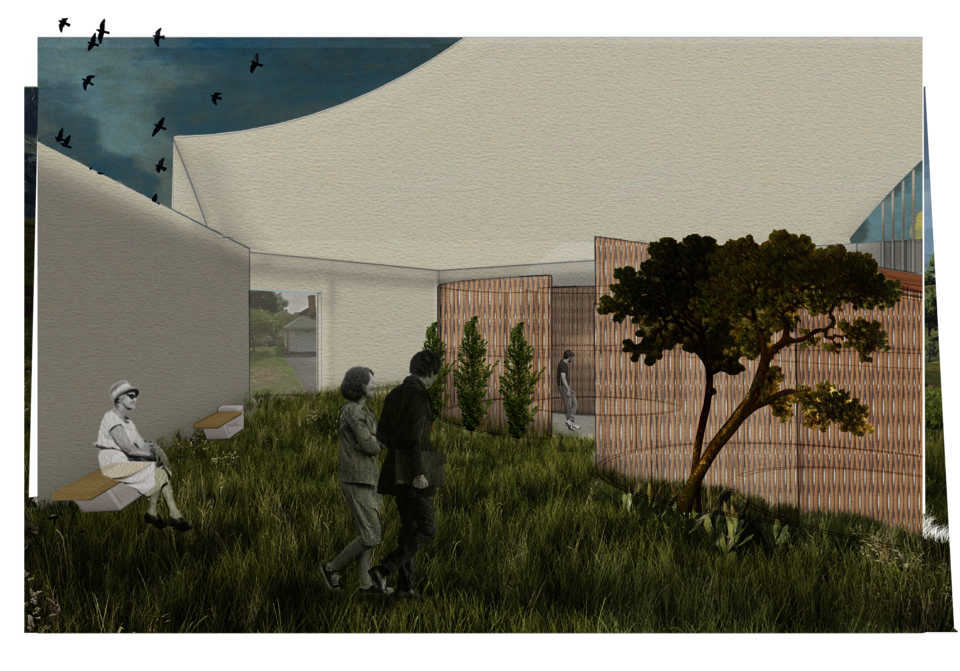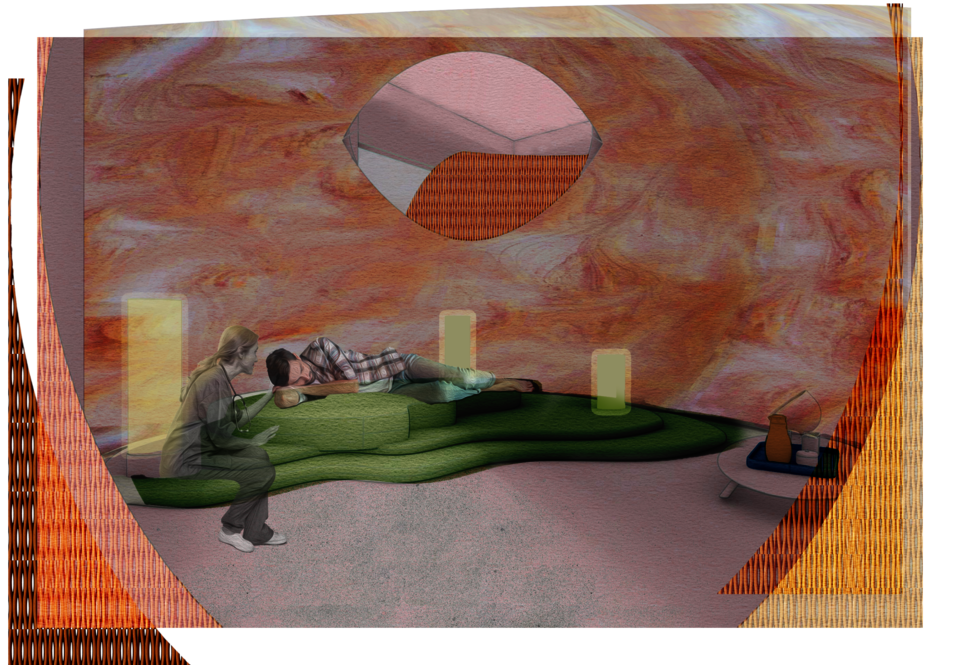Grace Caiazza
Dying Differently: Designing a Death-Oriented Psychedelic Treatment Center
In the context of therapeutic treatment for the terminally ill, psychedelic assisted therapy instigates a direct confrontation with a person’s experience of dying. Over the course of several weeks a patient will arrive at a facility, lay down in a room, and for up to eight hours at a time recommit themselves to the question: how do I comprehend death? Their answer will come in the form of sensations and sounds, visions and abstractions — things that are perhaps not immediately understood, but rather are immediately and vibrantly felt. The answer will follow a non-traditional logic unfamiliar to the empirical nature of other medical processes, and subsequently, challenge the institutional design of the medical environment hosting these moments of recognition.
How can an interior environment support such an extreme experience of interiority, folded into the self? To meet this challenge we look to historic examples of psychedelic environments and attempt to combine lessons from the past with contemporary medical space. By doing this, we can harness the work of radical designers whose practices were overtly confrontational — to oppressive institutions, to societal norms, to the threat of death in the atomic age — and incorporate them into a therapeutic context which typically seeks to gloss discomfort or personal agency in favor of stability.
In order to propose this new typology of space, this thesis seeks to adapt the pre-existing typology of the single-story brick industrial warehouse. With their ubiquity, material solidity, and residential context, these buildings provide a sense of familiarity and comfort to the user — a symbol of reassurance and structure. Once inside the perimeter, the patient is asked to condense the journey that is inherent to both death and psychedelics (from the known, across a threshold, and into to unknown) by traversing the space. The patient moves from an institutional environment across a nature-filled courtyard into a domestic scaled, private space of their choosing — resulting in a sense of stability and control, a sense of smallness in an expanse, and an environment which does not seek to neutralize their ability to discern or feel.
Image
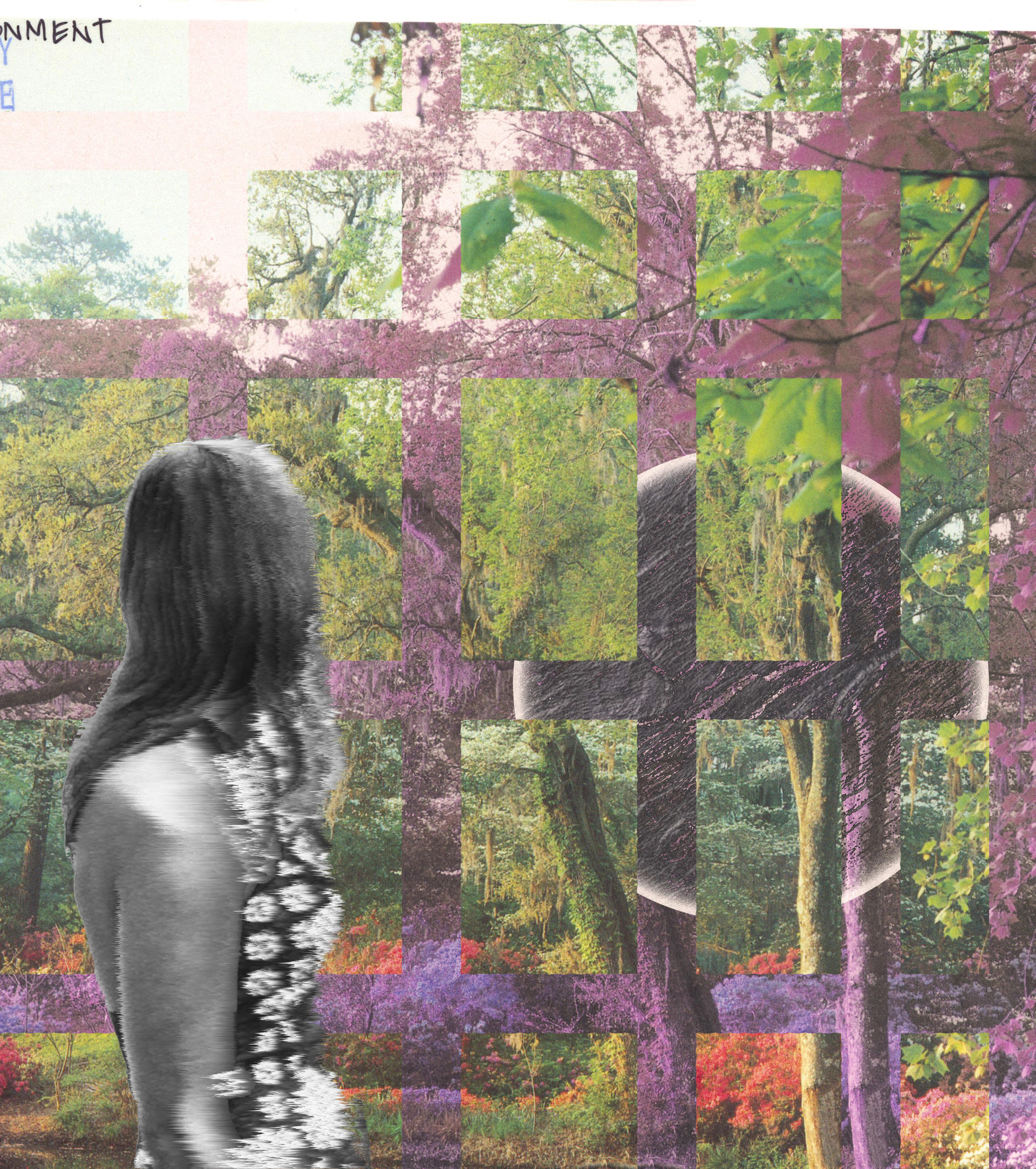
Concept collage depicting layering, offsetting & framing
Research
We are surrounded by architecture that denies, prevents, or delays mortality, but almost no architecture that addresses the specific experience of confronting and understanding death for those imminently facing terminal illness.
This dire lack was most evident to me during the long process of my mother’s death in 2015. Throughout her illness my family, like so many others in this country, moved between the institutional chaos of the hospital and the fraught, hazy, emotional environment of our home which was burdened with memories of normalcy.
This project, through the vehicle of psychedelic therapy, seeks to create a “third space” in the realm of death care. This space allows the patient to focus purely on the emotional and existential processes of acknowledging death. In doing so, the building generates an avenue for self-healing and actualization, where a person who is dying will have a supportive, individually-focused experience that will allow them to ask vital questions about what it means to die.
Image
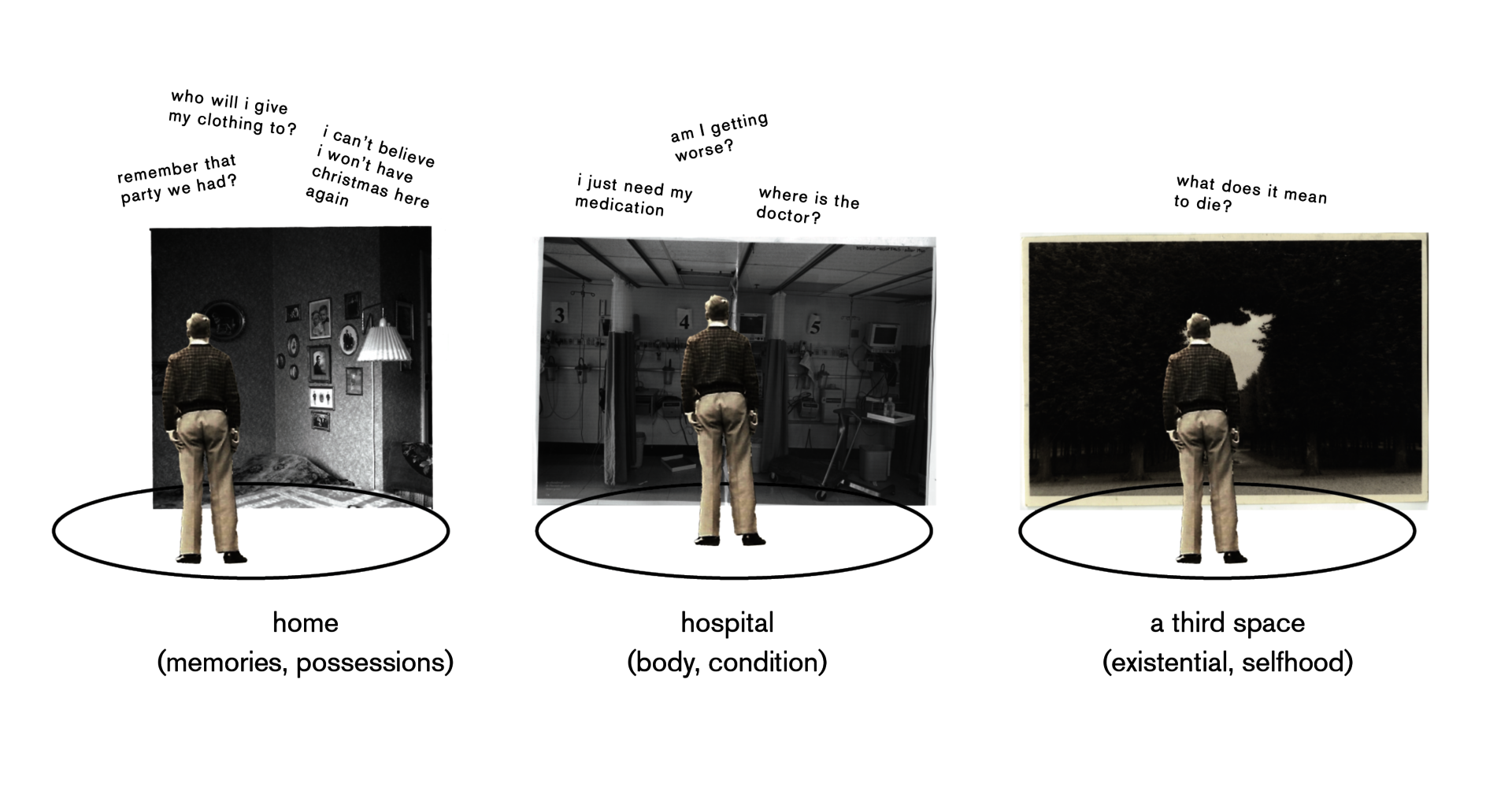
Concept diagram
User
Consent and Curiosity
The user of this project is self-selecting. While psychedelic therapy might be suggested, it would not be prescribed. Like other therapeutic practices there is a consensual component to undertaking psychedelic therapy that indicates at least some hope, interest, or enthusiasm on the part of the user. For the terminally ill this choice might be made in the face of an inability or disinterest to adhere to a regular schedules of antidepressants or antianxiety medications. It also might be made with the hope that the experience might be more impactful than standard talk therapy and medical treatment. It is the general assumption of this project that the user of psychedelic therapy pursues this course of action because they have a dire need to come to a place of acceptance with death, would like to shift their perspective on dying, or are simply curious as to what a psychedelic experience might consist of.
Physical Accessibility
The spectrum of the bodily capabilities of the terminally ill is broad, and while it is not recommended that those with serious disability consume psychedelics, it is safe to assume that many terminally ill people may need mobility assistance or suffer from fatigue. Before beginning psychedelic treatment for terminal illness patients are also evaluated for any pre-existing, long-term psychological conditions unrelated to illness such as (anxiety and depression) which may not permit them to continue to receive treatment.
Psychedelic Familiarity
Users will have a varying ranging of comfortability with psychedelics, and will bring with them all kinds of projections, fantasies and fears.
Image
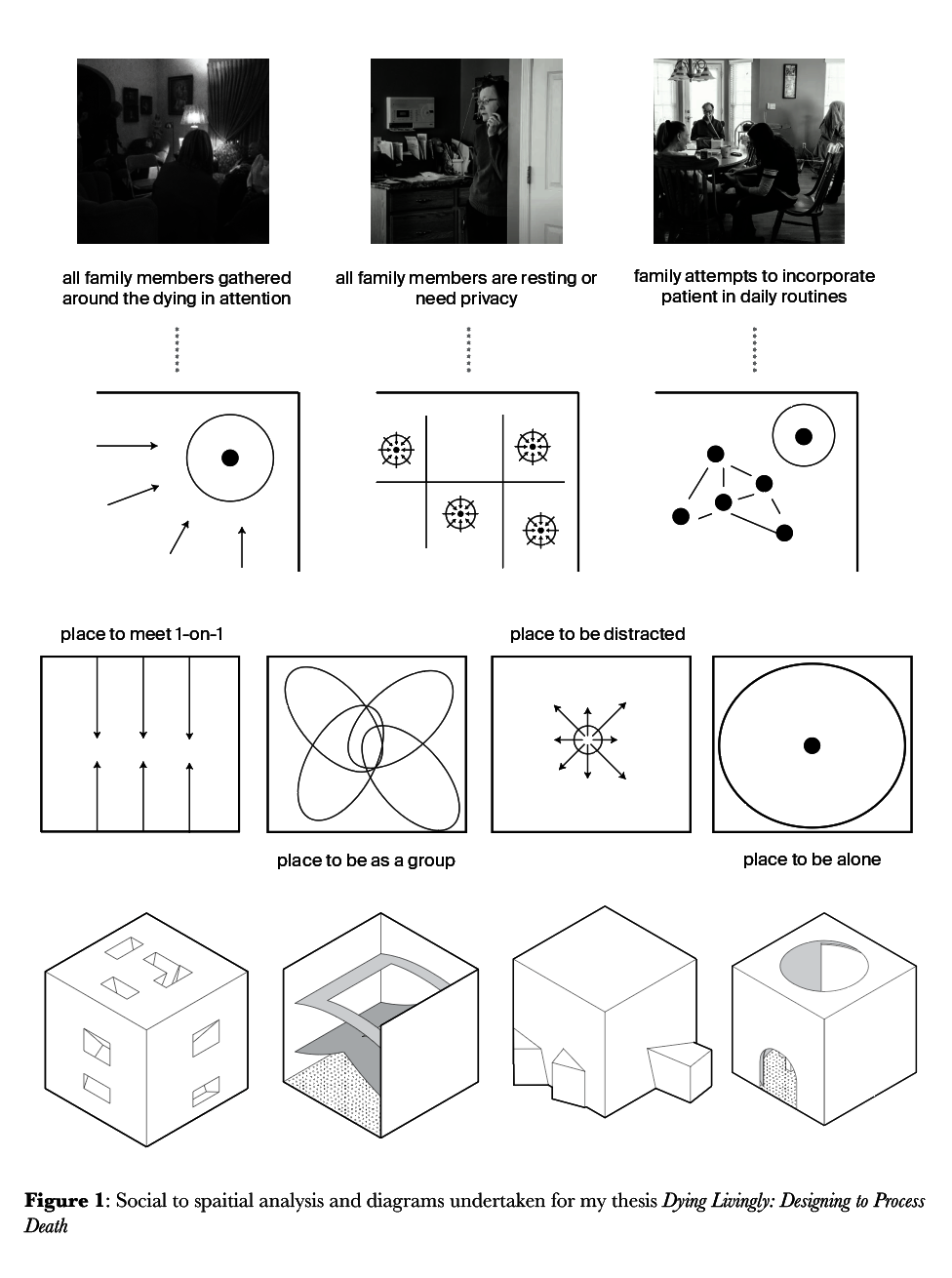
Site
To host these centers, I am proposing the adaptation of a specific typology of building, the single-story brick warehouse. This typology is particularly common to the Northeastern region of the United States, although examples of it exist throughout the nation. I chose this typology partly for its ubiquity, partly for the aesthetic implications of its form. In choosing this kind of structure, my hope is to demystify the experiences of both psychedelic therapy and the process of dying firstly by bringing them into proximity with individual communities, and secondly by building upon a familiar vernacular material language.
This choice of site also comes from an interest in the material qualities of the industrial warehouse, particularly that of the brick. There are many examples across the country of brick attempting to be beautiful. The results are sometimes clumsy, sometimes elegant. However, each attempt contains a foundational hope: that a rigid, mundane, and utilitarian form might express itself as graceful ornament.
This attempt to transform the commonplace into something transcendent deeply resonates with the themes of this project. At its center, this work believes in the potentials of psychedelic therapy to allow patients to reframe their hardened sense of self and circumstance. This softening is the result of a process which forces the patient to experience the world around them with new eyes, just as a designer might look at the brutal material of brick and attempt to see something curved, or porous, or light.
An example of this kind of ornamentation is the stepped brick facade, which is present in all of the sites I have selected. The aspirational qualities of the stepped brick facade signify an impulse in the creation of this building type to contain some gesture towards grandeur of form. This vernacular shape, designed and employed by an anonymous builder and now ubiquitous, intimates the appearance of a fortress or castle. This appearance greatly informed the design phase of this project, which takes this language of security and emphasizes it by elaborating the status of the brick wall as protective enclosure.
Image
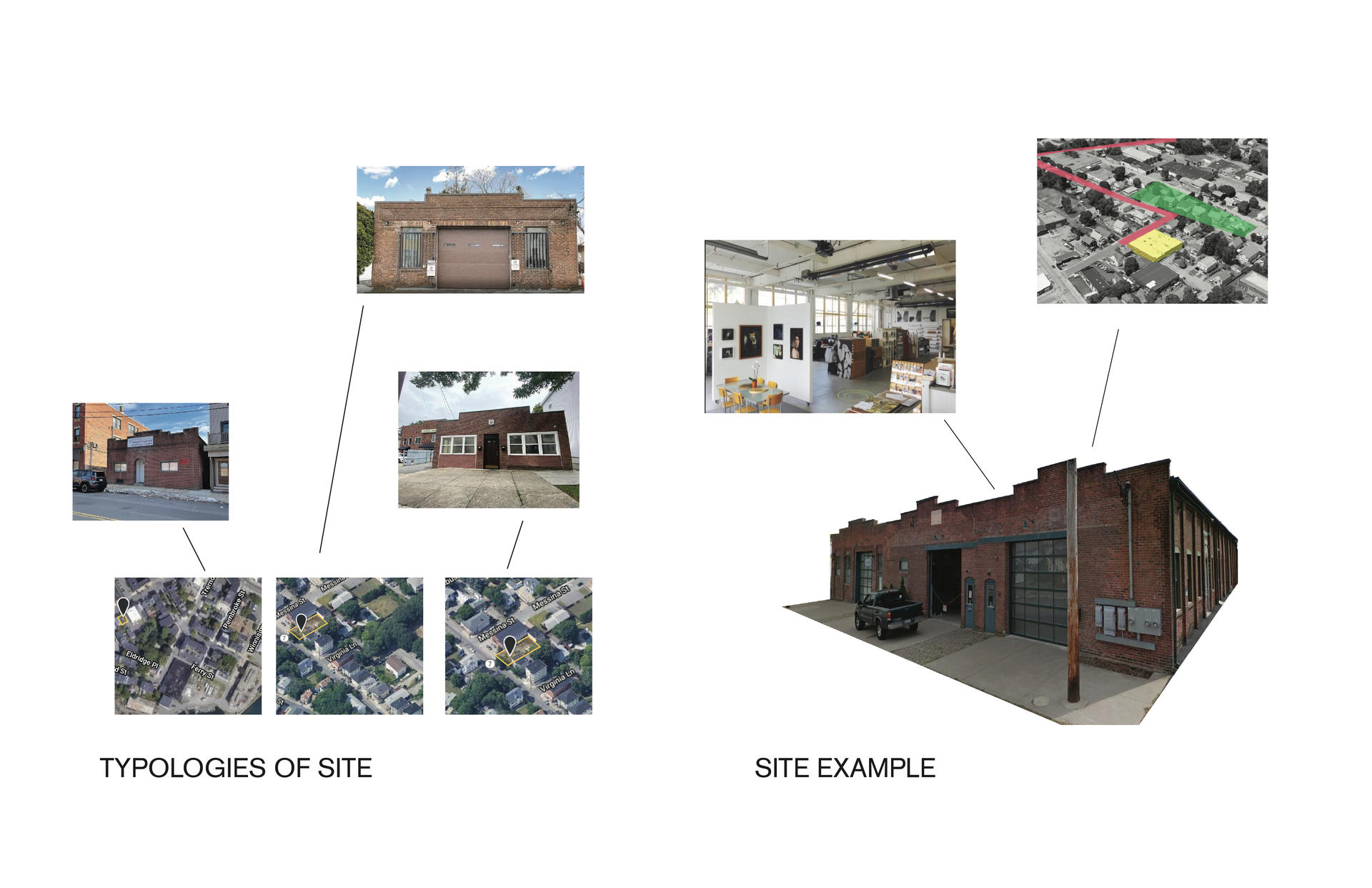
Images of project site
Plan + Renderings
- Architecture
- Ceramics
- Design Engineering
- Digital + Media
- Furniture Design
- Global Arts and Cultures
- Glass
- Graphic Design
- Industrial Design
- Interior Architecture
- Jewelry + Metalsmithing
- Landscape Architecture
- Nature-Culture-Sustainability Studies
- Painting
- Photography
- Printmaking
- Sculpture
- TLAD
- Textiles

